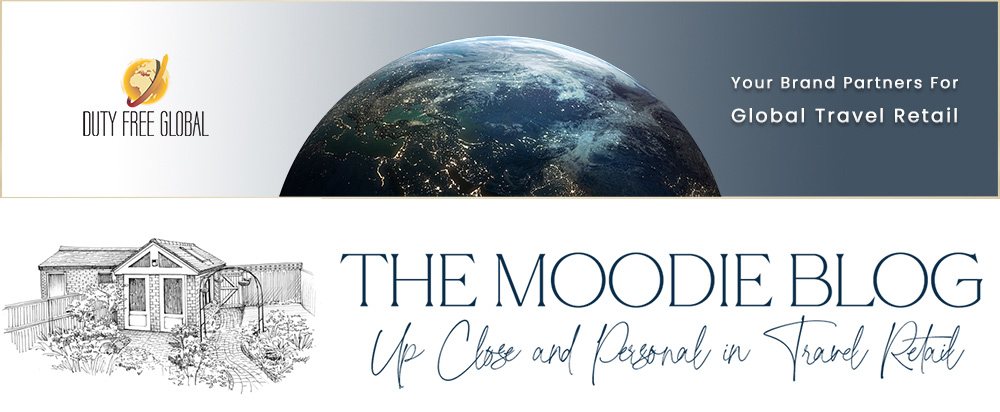Latest posts by Martin Moodie (see all)
‘Xi goes tropical while Shanghai struggles’ blared the headline in the Sydney Morning Herald, a dual reference to Chinese leader Xi Jinping’s recent visit to the island province of Hainan and the ongoing COVID-related lockdowns in Shanghai.
The crassness of the headline was followed by this inanity from North Asia correspondent Eryk Bagshaw: While more than 20 million people in Shanghai struggle to access food and medical treatment, Xi Jinping has popped into a duty-free shopping centre, visited a rainforest and found a tree he planted 12 years ago.
Right. So the Chinese leader had opted to indulge in some enjoyable island shopping and tourist activities while back home his people suffered.
 Get the picture? In case you didn’t, Bagshaw then laid it on as heavily as a pâtissier pouring icing onto a wedding cake. The Chinese President, he explained excitedly, was on the tropical island of Hainan, China’s southernmost province “and about as far from Shanghai’s lockdown as a leader can get”. The reporter then explained that there was almost no COVID on Hainan; that the beaches are “long” and the monsoon rainforests are “dense” on the island nicknamed the “Hawaii of China”.
Get the picture? In case you didn’t, Bagshaw then laid it on as heavily as a pâtissier pouring icing onto a wedding cake. The Chinese President, he explained excitedly, was on the tropical island of Hainan, China’s southernmost province “and about as far from Shanghai’s lockdown as a leader can get”. The reporter then explained that there was almost no COVID on Hainan; that the beaches are “long” and the monsoon rainforests are “dense” on the island nicknamed the “Hawaii of China”.
Lonely Planet this was not. But having lured readers with his lead paragraph about Xi’s leisurely pursuits, Bagshaw went on to explain that the Chinese leader was not, in fact, on holiday. No, he was in Hainan to inspect progress on a free-trade port, “one that he hopes will drive the country’s economy out of COVID by recruiting multinational companies to set up their headquarters in Hainan and challenge Singapore and other regional hubs”.

This glib description of the long-standing Hainan Free Trade Port programme was followed by the writer’s opinion that Xi’s visit “could not come at a worse time for China’s international image or offer a sharper contrast to the desperation of residents stuck in the metropolis where he made his name as a party disciplinarian: Shanghai”.
Bagshaw then accelerated into melodramatic overdrive. “The days have melted into weeks in China’s most cosmopolitan city,” he wrote, claiming that residents had struggled for days to make sure they had enough food to get through to the weekend.
“They have taken to their windows, balconies, megaphones and social media to vent their frustration at government authorities.” Those who had succeeded in getting food delivered had done so through community ingenuity and camaraderie, not [my italics-Ed] through government intervention, he emphasised.
You get the message. And, perhaps, the agenda. As I write, China has recorded 174,868 cases of COVID-19 since the original Wuhan outbreak (Source: Worldometer) with 4,638 deaths. Sounds like a lot? Well, let’s take a look at Mr Bagshaw’s country, Australia, a nation that has seen some of the world’s most stringent state and international border restrictions for much of the past two years.
Australia, a country of some 25.7 million people, has recorded 5,310,268 COVID-19 cases with, tragically, 6,727 deaths. Yesterday, according to Worldometer it announced 47,980 new cases. The state of New South Wales alone saw 15,367 new cases on Friday, and (according to Bagshaw’s own title, the Sydney Morning Herald) 13,601 yesterday. The country has witnessed many public protests, with much related violence, against COVID-related restrictions.
These numbers matter. They offer context. China’s COVID cases represent some 3.29% of the Australian number and 69% of deaths, despite Australia’s population being just 1.82% of China’s and its population density just 3 per square kilometre compared with 153 in China. Even Australia’s most densely populated area, inner-city Melbourne, has only 19,900 people per square kilometre.
Unsurprisingly, Chinese state media are not shy of making such comparisons. On Friday, Chinese Communist Party-controlled China Daily showed the latest national COVID numbers in a graphic positioned directly above one portraying those from other countries, including the US, France and UK.


China’s so-called dynamic zero-COVID strategy has attracted much criticism. Most of it from western media and much of it lacking balance. The reality is that until Omicron took hold, that policy had proven remarkably successful in preventing spread and fatalities. There is no question, however, that the variant poses a tremendous challenge to the Chinese authorities and people, nor of the gravity of the crisis in Shanghai. State media Global Times yesterday called the situation in the city’s Pudong district “severe and complicated” noting the “skyrocketing” number of cases since March.
I’ll take my guidance on the real situation in China from such sources. China, like Australia, faces a huge challenge from a still-evolving virus. Reporting in a fair and balanced way how countries are meeting that challenge is important.
As for the duty free shopping Bagshaw so flippantly refers to, that represents a US$5 billion retail sector, which serves as a cornerstone of one of the world’s most ambitious free trade programmes. A sector that has boomed through Chinese citizens being able to travel freely to a holiday island throughout most of the pandemic and enjoy the world’s most generous duty free shopping rights.
I suspect that another beautiful island off a nation’s south coast could do with such an economic stimulus. Offshore duty free in Tasmania anyone?


